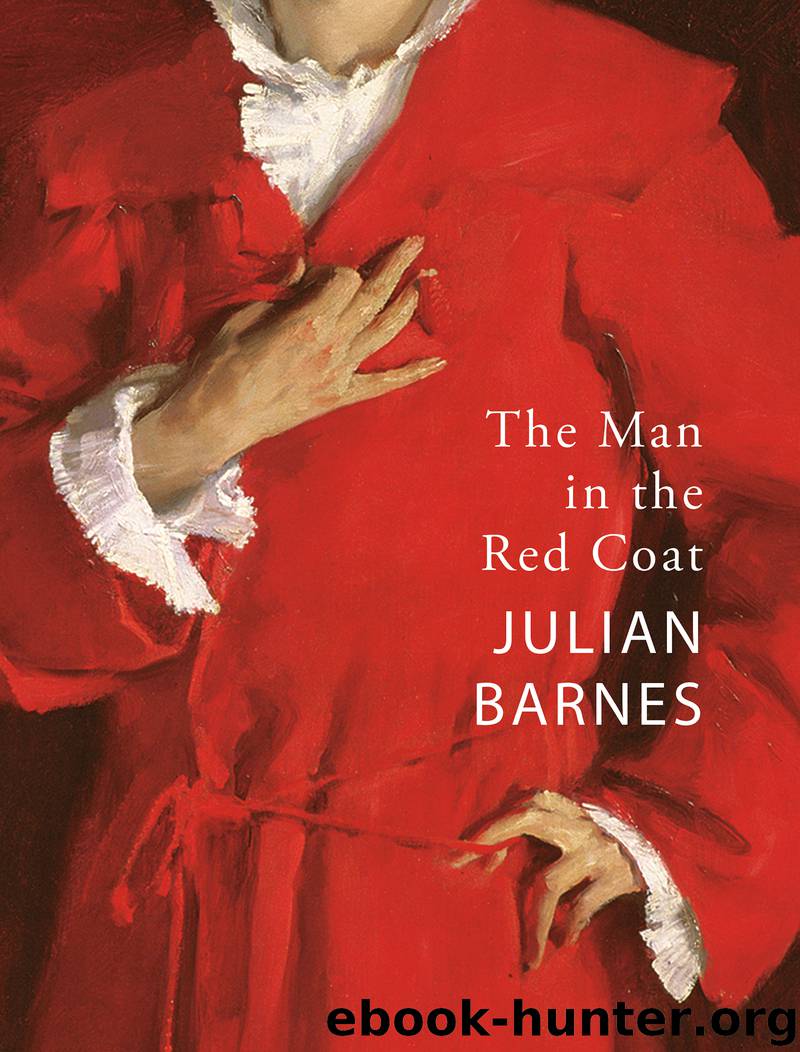The Man in the Red Coat by Julian Barnes

Author:Julian Barnes
Language: eng
Format: epub
Publisher: Random House of Canada
Published: 2020-02-17T16:00:00+00:00
Of course, Old Europe didn’t go down without a fight. Oscar Wilde arrived in America in January 1882 for a yearlong, coast-to-coast tour; Count Robert de Montesquiou in January 1903 for a briefer, four-city engagement. Both saw themselves as being on missions civilisatrices. At the national, imperial level this involved land and God and loot; at the personal, cultural level, this involved self-promotion, fame and loot. Wilde, on his return, boasted to Whistler that he had “civilised America” (adding that this left only Heaven to conquer). His tour was theatrical in manner and often in location; it was also, in its deliberately provocative aestheticism—and to use one of his favourite adjectives—vulgar.
Montesquiou’s tour was private, geographically limited, and more socially exclusive. “The beautiful Count is coming to Boston,” wrote one newspaper. “This gentleman of France is now a reigning divinity in New York due to his good looks and good clothes. He does not lecture but gives ‘conferences’ at $5 a ticket.” These events were held in large hotels and the drawing rooms of fashionable houses. After New York and Boston he went to Philadelphia and Chicago, where he was received by Mrs. Potter Palmer, the art collector and wife of a famous manufacturer of biscuits. (These American Palmer’s Biscuits are not to be confused with the “Palmer’s biscuits” which Des Esseintes sees on display at the Bodega in Paris during his failed expedition to London. These would certainly have been British, and made by Huntley and Palmer.)
When Wilde visited the States, the deal was that he should be promoted as a fashionable member of British society as much as a writer or thinker: he would proclaim the new aesthetic ideal of Beauty, while also publicly embodying that ideal. In England he had become famous by being inflated into the figure of Bunthorne in Gilbert and Sullivan’s Patience; in America he was to become famous by being inflated into the figure of “Oscar Wilde.” It is a moment when a shift in the nature of literary fame occurs. Previously, a famous writer was a writer who became famous by writing. Wilde pioneered the idea of becoming famous first, and then getting down to the writing. By the end of 1882 he was “still” only a minor poet and diligent lecturer. But he was also famous on two continents and therefore primed for a literary career. By June of 1882 the takings from the Wilde Experience were over $18,000, with his profits after expenses about $5,600.
Wilde also established another prime rule of fame in the modern age: that there is no such thing as bad publicity, there is only publicity. Success is better measured in column inches than by what those columns contain. Wilde understood that the “penny newspapers” were “the nineteenth-century standard of immortality.” Having the aesthetic ideal mocked by Philistines was just as good an advertisement for that ideal as a lecture hall full of solemn applauders. He learned to outface those who hissed him, who called him “a penny Ruskin,” who sneered that “she’s a Charlotte-Ann.
Download
This site does not store any files on its server. We only index and link to content provided by other sites. Please contact the content providers to delete copyright contents if any and email us, we'll remove relevant links or contents immediately.
| Africa | Asia |
| Canadian | Europe |
| Holocaust | Latin America |
| Middle East | United States |
Fanny Burney by Claire Harman(26526)
Empire of the Sikhs by Patwant Singh(22974)
Out of India by Michael Foss(16791)
Leonardo da Vinci by Walter Isaacson(13182)
Small Great Things by Jodi Picoult(7019)
The Six Wives Of Henry VIII (WOMEN IN HISTORY) by Fraser Antonia(5396)
The Wind in My Hair by Masih Alinejad(5034)
A Higher Loyalty: Truth, Lies, and Leadership by James Comey(4844)
The Lonely City by Olivia Laing(4750)
The Crown by Robert Lacey(4723)
Millionaire: The Philanderer, Gambler, and Duelist Who Invented Modern Finance by Janet Gleeson(4376)
The Iron Duke by The Iron Duke(4291)
Papillon (English) by Henri Charrière(4195)
Sticky Fingers by Joe Hagan(4101)
Joan of Arc by Mary Gordon(4014)
Alive: The Story of the Andes Survivors by Piers Paul Read(3968)
Stalin by Stephen Kotkin(3875)
Aleister Crowley: The Biography by Tobias Churton(3589)
Ants Among Elephants by Sujatha Gidla(3417)
